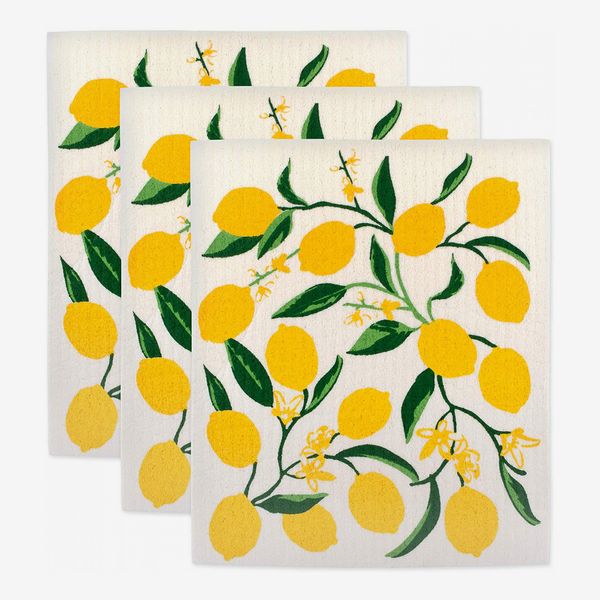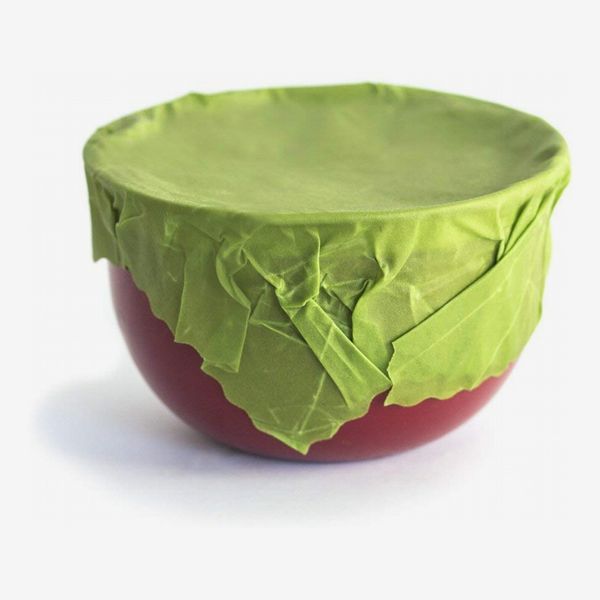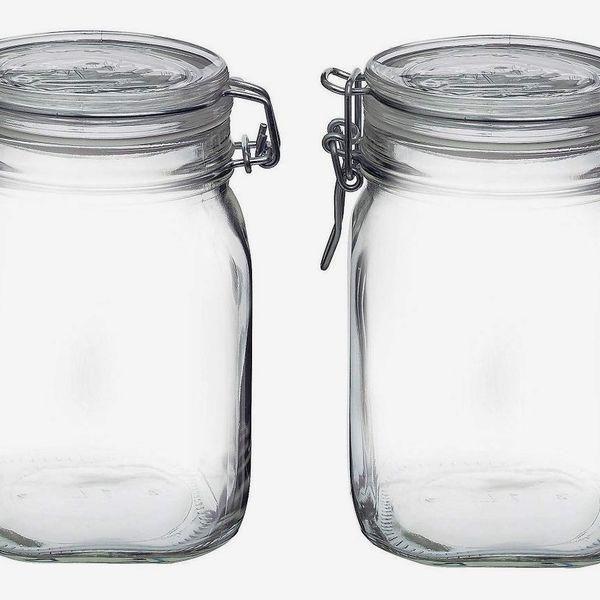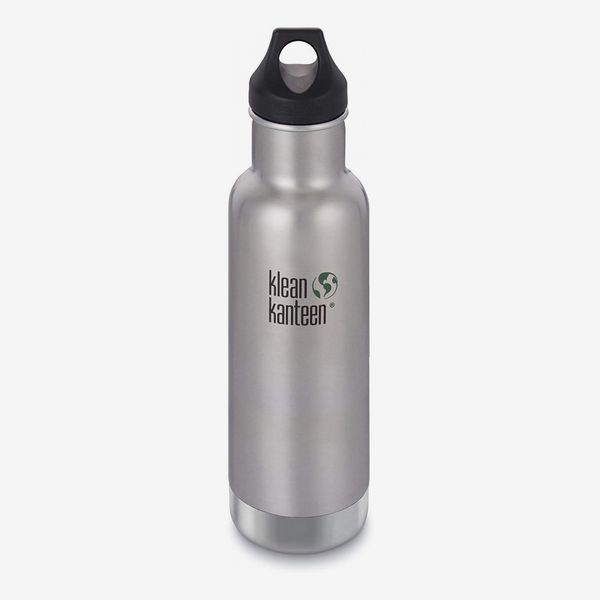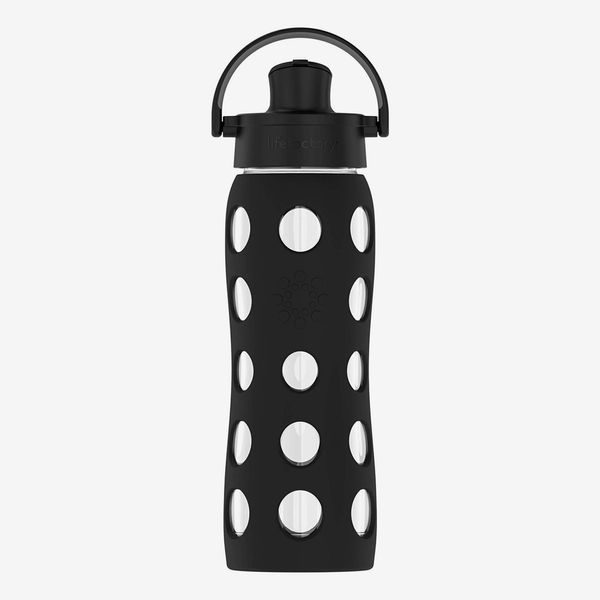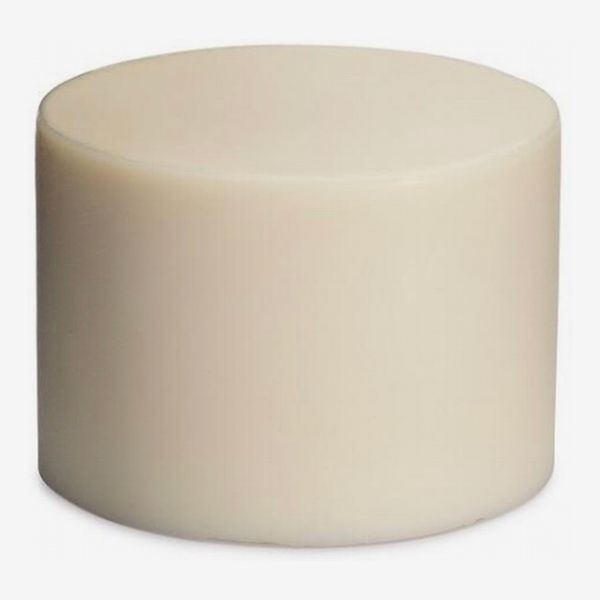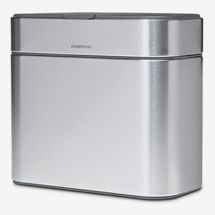
We all learned to reduce, reuse, and recycle as early as we learned to read — but truly practicing those tenets in your daily life takes conscious thought.
“My philosophy is to help people understand the small choices they can make,” says Micaela Preston of the natural-living blog Mindful Momma, “and that any choice they make is a good choice.” A great place to start is by finding products that allow you to avoid plastic wrap and paper waste, according to Preston, who notes that lots of those items are more durable, more attractive, and nicer to use than their single-use counterparts — not to mention, as LaToya Tucciarone, owner of SustainAble Home Goods in Atlanta, points out, more affordable in the long run. To find ways to create an ecofriendly kitchen, we asked for recommendations from Preston, Tucciarone, and more than a dozen other experts who make it their business to live as sustainably as possible.
We ended up with many versions of the same type of reusable products, so we’ve grouped together similar ones to help you compare and choose what will best fit your lifestyle and taste. Read on for all our picks.
Best alternatives to paper towels and napkins
As Preston says, one of the simplest and affordable ways to kickstart an ecofriendly kitchen makeover is by swapping out single-use paper products for reusable cloths. She directed us to this 12-pack of heavy-duty “paperless towels” that costs $15. Handmade from soft and absorbent bird’s eye cotton (so called for the fabric’s diamond-weave pattern), they’re machine washable and come in bleached or unbleached options. (You can also choose from more than a dozen thread colors for the outer edges, or spring for a “rainbow” pack that includes them all.) Preston likes to keep her towels under the sink and uses them for almost every kind of mess.
According to Strategist contributor Ashlea Halpern, a self-described compulsive cleaner who “could plough through half a roll” of paper towels “in one cleaning session,” these Swedish dishcloths are “a game changer.” Invented by a Swedish engineer in 1949, the rags, which she calls “superabsorbent,” are made of “100 percent naturally biodegradable cellulose or a combination of wood pulp and renewable cotton,” dry quickly, and can be thrown in the wash. She uses them just as she would a paper towel and estimates that she’s cut down on her paper-towel consumption by at least 80 percent. They come in “a zillion cheerful prints,” Halpern notes, as well as in solid colors. Tucciarone is also a huge fan.
Tucciarone uses tea towels on the regular. “Not only can they clean like the Swedish dishcloths, but they’re great for drying your dishes and hands as well,” she says. Not to mention you can fold them up to use as pot holders and trivets. “Having multipurpose items really cuts down on the crap in your kitchen,” she says.
Of course, they key to cutting down your paper-napkin use (or even more paper towels if you regularly use those as napkins) is to invest in some quality cloth ones. There are many options out there in varying materials, sizes, and designs, but if you’re overwhelmed, a great place to start is with these basic linen ones from Williams Sonoma. They come recommended by Sam Bernstein, the founder of hospitality group Table22, who says they’re “large and durable and really stand up to a lot of use.” You can mix and match a wide variety of colors or stick to a uniform look.
Best alternatives to plastic wrap
To wrap up food without using plastic, two of our experts — Preston and Ali Rosen, the author of the potluck cookbook Bring It!: Tried and True Recipes for Potlucks and Casual Entertaining — recommend using beeswax paper. “I am obsessed with beeswax paper to wrap things,” says Rosen. “It replaces plastic bags and plastic wrap and is super easy to clean.” Etee is one of the brands Rosen turns to for reusable wax food wraps — and if it sounds familiar, that’s because she told us about it before when we asked her to share some of her picnic accessories with us: “Made of beeswax and tree resin and hemp, this breathable wrap can be reused and is biodegradable. I don’t trust it with anything liquid, but for sandwiches and solids, it’s surprisingly sturdy and keeps food very fresh.”
Strategist contributor Laura Perciasepe and Phantila Phataraprasit, a co-founder and the COO of the sustainable-furniture company Sabai, swear by these beeswax covers from Bee’s Wrap. Perciasepe explains each one as “a classy little reusable scrap of organic cotton covered in beeswax, organic jojoba oil, and tree resin, which can be used as an alternative to plastic wrap.” Each wrap is washable and good for up to a year. (If cutting down on purchasing is part of your ecofriendly turn, Preston notes you can make your own beeswax wraps.)
Laura Durenberger, the blogger behind Reduce, Reuse, Renew, points out that “if you’re vegan or primarily plant based, you may be looking for a product that doesn’t contain beeswax.” These wraps that she recommends function similarly to the two products above but are made with candelilla and non-GMO soy wax instead of beeswax. Sold in packs of three, the wraps come in three different themed patterns and include one bigger size, which the brand says is good for “large salad bowls,” and two smaller ones it says are “perfect for sandwiches.”
Preston opts for fabric bowl covers with elasticized edges. The elastic lets each cover fit snugly around a bowl, and the fabric is easy to wipe down or launder. Her favorite covers, from Etsy, are currently unavailable, but these well-reviewed polyester ones on Amazon are very similar — and cost a fraction of her favorite’s price.
For a sturdier alternative to plastic wrap (or any of the reusable covers above), Preston suggests these stretchy lids from Food Huggers that she says can go over bowls you already own. “Made from clear tempered glass and safe silicone, they are durable, flexible, and stackable,” she explains. The latter attribute makes them a touch more versatile than the wraps and covers.
In addition to its reusable bowl lids, Food Covers makes this kit of reusable storage items that really lean into the brand’s name. The pieces are quite literally covers made to fit around foods like avocados, onions, lemons, and other fruits and vegetables you may only want half of at any given time. Preston is a fan. “Got half an onion or lemon or tomato? Gently press the cut end of your fruit or vegetable into the flexible food hugger, and it will create a snug seal around the food,” she says.
If you’re looking for a microwave-safe bowl cover, Preston recommends one made out of silicone. “Silicone is inert, so you don’t have to worry about leaching. It’ll keep the splatters from coming up and keep heat in there, too.” This set includes five covers ranging in size from 4 inches to 12 inches in diameter, so you can cover everything from a small cup to a large mixing bowl.
This similar set of reusable silicone lids comes recommended by Haley Boyd, the founder of shoe company Marais USA and another proponent of a zero-waste lifestyle. “These covers are great because they’re not so size-specific,” she told us when we spoke to her about the products she can’t live without. “If the lid is a little bit bigger than the bowl, it doesn’t matter.” She likes that they’re multi-use, noting that you can “just plop one on top of your bowl before sticking it in the fridge, cook on the stove top with one instead of using a regular lid,” and that “they can even go in the oven.”
Two of our experts, Preston and Francine Jay (who recently published her second book, Lightly: How to Live a Simple, Serene, and Stress-Free Life), say that another super-basic solution for avoiding plastic bags is to keep a set of flour-sack dish towels in your kitchen. Says Preston: “I use them to wrap up bread, cover bowls with them for short periods of time, and I use them to cover my kombucha while it ferments.” She likes that they’re “lightweight and breathable.”
Best alternative to Ziploc bags
Several of our experts — including Preston, Boyd, and Phataraprasit — told us they swear by Stasher’s reusable silicone bags as an alternative to plastic storage bags. Billed as “the world’s first fully functional, self-sealing, non-plastic bag,” Stasher bags come in a variety of sizes, are airtight, and can be put into the freezer, the microwave, and even boiling water for sous-vide cooking.
Strategist contributor Alison Freer also swears by reusable food bags, specifically Rezip’s stand-up, airtight, leakproof, zipper-top bags made from FDA-grade PEVA material, which are “the closest thing I’ve found to the classic disposable zipper-lock storage bag,” she says. They come in a set of three, which makes them a little more budget-friendly than the Stasher bag, which is sold individually.
Best nonplastic food-storage containers
Bea Johnson, a pioneer of the zero-waste lifestyle and author of the book Zero Waste Home, favors French canning jars by Le Parfait for all of her food-storage needs. Not only do the lids stay attached (preventing a drawerful of mismatched tops), the jars can be refrigerated, put in the freezer, used for bulk goods in the pantry, taken to the store when grocery shopping, and even used to store trash. According to Johnson, these have eliminated the use of aluminum foil, plastic wrap, wax paper, and Ziploc bags in her home.
When Boyd started shopping the bulk bins (instead of buying prepackaged goods), she stocked up on lidded canning jars for her kitchen. Her go-to jars are these from Bormioli Rocco, which don’t have logos on the sides and are a bit larger than the jars above (though they come in “almost every size,” according to Boyd). “I bought like 30 of these jars and now my pantry is locked and loaded,” she says. “Things stay fresh longer, and my pantry always looks pretty and organized.”
Lauren Singer, the woman behind the blog Trash Is for Tossers and the waste-free store Package Free Shop, stands behind the humble Mason jar for a number of purposes, including food storage and grocery shopping. She recommends bringing them along to the farmers’ market or any store where you buy grains, nuts, and other items in bulk without any packaging. You can buy these in bulk, too, for not too much money.
For a non-jar option, consider these glass containers that Jonkoff recommends. She admits that “the lids are made of plastic,” but promises that “they last far longer than your average all-plastic grocery store food-storage containers. My husband and I have been using the same two sets for over five years with no issues.” She notes that these can also function as serving dishes in a pinch, and that the four-pack comes with a variety of sizes. “The huge rectangle holds a boatload and the small sets are perfect for keeping that last bit of avocado without overcrowding the fridge,” Jonkoff says.
“What I like about glass storage containers is their versatility. Most can go in the freezer, microwave, dishwasher, and oven (minus the lids),” says Jay, whose favorite set of glass containers also has plastic lids. For those who don’t want any plastic in their containers, Preston recommends these glass ones by Frego that come with lids made of silicone. The glass vessels also come with protective outer silicone sleeves (that also provide insulation), and their silicone lids have a dual lock to ensure they won’t open. These containers are also BPA-free, safe to put in freezers, microwaves, ovens, and dishwashers, and available in a bunch of fun colors.
For stylish (and eco-friendly) food storage that travels well, consider the Porter bowl from W&P that writer Laura Fenton uses everyday. “My friend who is a food editor gave this to me, and it’s become my go-to for toting lunch to work,” says Fenton, the author of The Little Book of Living Small. The screw-top container is made of glass and wrapped in a protective sleeve of silicone. “It never leaks and I can put it in the microwave (and dishwasher) with none of the worries of plastic leaching chemicals into my food,” she adds. Boyd also uses a W&P bowl for her lunches, but she prefers one made out of ceramic, saying, “[it feels] like something that you would want to eat out of at home.”
Best reusable produce bags
You can also replace single-use plastic produce bags with reusable ones when you go grocery shopping, according to our experts. Environmental-lifestyle expert Danny Seo of blog Naturally, Danny Seo, loves using cotton produce bags, specifically “these bags I found on Amazon.” He calls the netted bags a “game-changer,” adding that “they’re breathable, lightweight, all-natural, and hold everything from loose lettuce to lemons. I love not using any plastic at the store to get my groceries.”
When buying bulk items like rice and lentils, Boyd puts them in these bags (which are made from linen instead of cotton) that she told us she keeps in her grocery tote with her Stashers.
According to Strategist contributor Mattie Kahn, these cotton produce bags can be used to keep your veggies fresh for longer in the fridge. The Vejibag, Kahn says, is “the best piece of cotton cloth I have ever spent money on,” because it allows vegetables to “breathe.” When stored in plastic, veggies tend to turn into mush when you don’t use them right away. With the Vejibag, “I’ve made spinach last a week compared to three or four days,” Kahn says. To use, simply wet the cloth, throw in some fresh produce, toss the whole thing in the crisper drawer, and voilà, enjoy unwilted greens for much longer than if they were kept in a plastic bag. Preston is also a fan. “They’re a game changer for storing fresh produce in the refrigerator,” she says.
Best reusable beverage containers
For Fenton, the discovery of this collapsible coffee cup was “nothing short of life-changing for my zero waste ambitions.” With a body made of silicone and a plastic lid and heat sleeve, its mouth tab is airtight and leak proof. When you’re finished with your beverage (or even a soup or porridge), you can fold it up into a two-inch disc and easily put it away. “I haven’t bought a coffee in a disposable cup since I ordered mine in 2018,” says Fenton. “It’s always in my bag and takes up very little space.”
Laurel Miller, editor of Edible Aspen and the blog the Sustainable Kitchen, goes out of her way to avoid plastic water bottles and disposable coffee cups, which is why she turns to Yeti insulated beverage containers for hot drinks, cocktails while camping, and everything in between. “They’re indestructible, and for someone like me, who travels a lot and is active, I’ll just clip one of those to my backpack with a carabiner or toss it in my bag, so I don’t have to rely on plastic and paper containers.”
“I’m never without my Klean Canteen, either,” Miller says. “I even travel overseas with it and decant bottled water, if that’s a necessity, into it and cut down on plastic by only buying gallon jugs or larger.” Made from durable, double-walled stainless steel, it keeps hot beverages hot for up to 12 hours, and cold beverages cold for up to 24.
As Dr. Anita Vandyke, the author of A Zero Waste Life: In Thirty Days, reminds us, “drinking something out of a glass makes it taste good.” (There’s a reason the material has become the colloquial name for whatever vessel most people reach for when they want some water.) If you agree, you might consider her favorite reusable cup. Made of glass, it comes in sizes from four to 16 ounces and has a thermal silicone sleeve and an anti-splash lid. Shown in army green, the cup comes in a slew of other trendy colors including sandstone, terra-cotta, vintage blue, and pink.
Jay also prefers glass for her water bottles and recommends Lifefactory, because its water bottles come with a protective silicone sleeve that she says is “surprisingly effective at preventing breakage.” This one has a flip-top opening and is available in a range of colors. For many, many more reusable water bottles, check out our lists of the best-reviewed ones on Amazon and the water bottles Strategist editors swear by, as well as our investigation into what water bottles all the cool people are carrying.
In addition to cutting down on single-use to-go coffee cups, you might want to think about ways to limit your use of paper coffee filters or Keurig–type pods. One alternative to those forms of brewing is this coffee maker that Jay recommends. “The stainless steel mesh is very fine (so it keeps the grounds out), and I find the result comparable to paper filters, but without the waste,” she explains.
If you have a La Croix habit, another way to cut down on your waste is by making your own seltzer water at home, so you’re not throwing away piles of aluminum cans away each week. Fenton says her Sodastream machine is her No. 1 ecofriendly kitchen product. “We drink a lot of seltzer with no packaging waste thanks to our bubbly machine,” she says. Plus, it doesn’t take up too much counter space in their small kitchen, and she’s had it for years. She says you can replace the bottles from time to time when they start to look tired. For more affordable (and fancier) soda-machine options, check out the several models we tested ourselves.
Best reusable-utensil set
Tucciarone loves this to-go utensil set for bringing with you to a food truck or picnic or for when you have friends over and don’t want to get out the real silverware. They’re dishwasher safe, but cleaning by hand adds to their life span. The utensils’ holder, in a sturdy material made of recycled plastic bottles, is also washable.
Best sustainable dish soaps
The kind of dish detergent you use can also have an impact on the environment. “There’s so much talk about pollutants going down the drain and how to prevent everything from microplastics to petroleum-based surfactants from getting into waterways,” says Seo. He found that a lot of the “green” dishwashing soaps out there aren’t effective when it comes to getting greasy pots and pans clean, but this one is. “I like the Mrs. Meyer’s brand because there’s a lot of chemistry behind their formulations,” he says. “And their motto is simple: Basically, if it goes down the drain, it’s biodegradable.”
To remove as much plastic as possible — including any plastic bottles of dish soap — from her kitchen, Jonkoff says she wants to try this soap bar that’s hailed as a holy grail in the zero-waste world. According to the product description, the soap is free of plastic packaging, sudsy and effective at cutting grease, and made of vegan and biodegradable ingredients. Tucciarone can attest to how well it works. “It’s ginormous,” she says. “It will literally last you for years. The fact that you apply it to a scrub brush makes it easy to get such a good lather.”
Speaking of the scrubber, this wood-handled version made by the same company is a perfect companion. The handle allows you to comfortably move the brush back and forth across the soap bar, and the scrubber assists in cleaning pots and pans that require a heavier hand than a basic sponge can deliver.
Here’s another vegetable oil-based soap block that Durenberger recommended for our round up of the best ecofriendly and kid-friendly cleaning products. “Not only does it have simple ingredients, but it also lasts a really long time,” she says.
“Blueland is such a brilliant company,” says Tucciarone. It sells multiple types of cleaners — hand soap, dish soap, sprays, and laundry detergent — that work by filling a reusable bottle with water and placing a dissolvable tablet inside. “This method is particularly great if you’re trying to get your kids into sustainability,” Tucciarone says. “They really enjoy the process.”
If you’ve got a dishwasher in your kitchen, Jonkoff recommends the biodegradable detergent pods from Dropps that she does use at home. She likes that the “pod membrane fully dissolves in water and is broken down by microorganisms in the water treatment system,” and that “the box just shows up to my house in compostable and recyclable packaging with carbon neutral shipping.” You can buy a 64-load set for $25, or enroll in Dopps’s subscription service (that Jonkoff recommends), which cuts that cost to $20 (a 20 percent savings) and automatically delivers a 64-load set to your doorstep every four months. (Strategist contributor Steven John is also a fan of Dropps’ dish and laundry detergent pods and even did the math to show that buying them in bulk has helped him and his family save money.)
“This is a perfect everyday cleaner,” says Tucciarone. “It works beautifully for wiping down your counter, your sink, and even your stove.” It’s made with natural ingredients and scented with bergamot, a smell Tucciarone describes as “lovely.”
Best compost bins
Composting can be a bit of a pain especially if your city doesn’t support it as part of its regular waste pickup. That being said, it’s an impactful step you can take, and one way to make it easier on yourself is to actually put your compost bin right next to your trash and recycling cans — a daily reminder that will become routine. Taryn Williford, lifestyle director at Apartment Therapy, loves the Simplehuman dual trash can, which she calls the best thing in her kitchen. “I’m trying to be more conscious of my waste, and the fact that I can have my trash and recycling sorted behind one slim-lined stainless-steel bin really soothes both the aesthetic and functional parts of my brain — and that’s not always easy to do,” she says. “I also have Simplehuman’s compost caddy, which hangs off the side of the trash can, so it’s really a three-in-one ecofriendly solution for me.”
If you’re interested in composting but don’t want to change up your whole trash and recycling system, you can opt for a small, basic compost bin to keep on your counter or in your fridge. This simple white one from Strategist-favorite brand OXO comes recommended via Tonne Goodman, sustainability editor at Vogue, who regularly hauls scraps from hers to New York’s Union Square compost center.
Finally, if you really want to keep things out of sight and stink free, you can try this bin made to secure onto your freezer door. A few years ago, Strategist editor Maxine Builder conducted an investigation of the most stylish compost bins and landed on this one as her overall favorite.
Best compost program
Although this isn’t a product, Tucciarone wanted to add the service Compost Now, which solves any issues of time, space, and city-compost support by dropping off a bin at your house when you need one, picking it up, and replacing it with a clean one. (The company even provides broken-down compost for your garden or plants as a way to make it all come full circle.) The service isn’t available everywhere, but you can check your address on the website and join an “interest list” to help get it there if it’s not.
The Strategist is designed to surface the most useful, expert recommendations for things to buy across the vast e-commerce landscape. Some of our latest conquests include the best acne treatments, rolling luggage, pillows for side sleepers, natural anxiety remedies, and bath towels. We update links when possible, but note that deals can expire and all prices are subject to change.
Every editorial product is independently selected. If you buy something through our links, New York may earn an affiliate commission.

